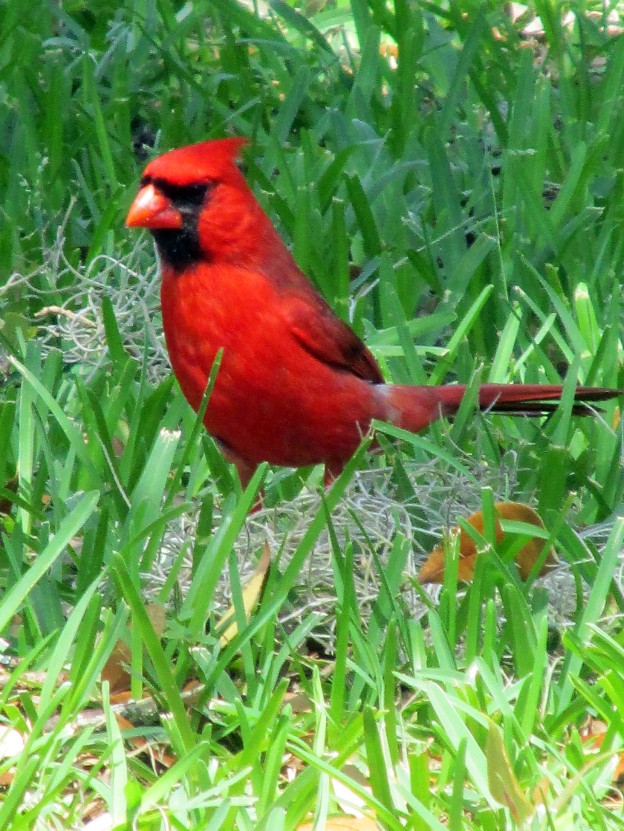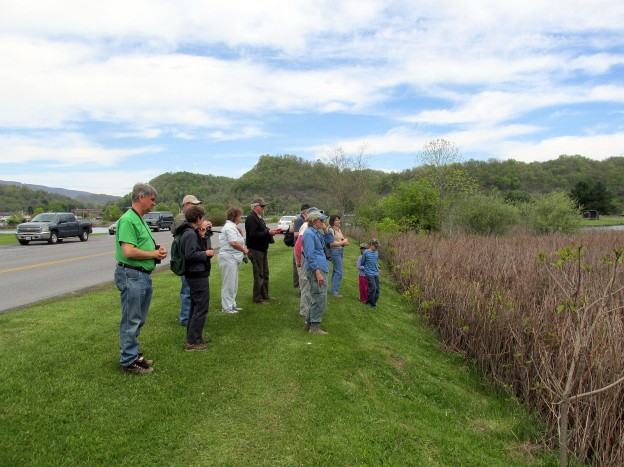
Photographs by Bryan Stevens Eastern Bluebirds decorate one of the pieces of American sculpture on display at Brookgreen Gardens.
I enjoyed a recent trip to Pawleys Island, South Carolina, which gave me an opportunity to see some birds rarely encountered here at home.
By the end of my seven-day stay, I’d compiled a list of 93 species, most of them seen at Huntington Beach State Park and Brookgreen Gardens. If you ever get an opportunity to visit either of these attractions, I’d encourage you to take it. Even if you’re not a birding enthusiast, the park and gardens are fascinating destinations with a range of activities available to visitors.
In particular, I found my visits to Brookgreen Gardens particularly fascinating. Brookgreen Gardens is a sculpture garden and wildlife preserve, located just south of Murrells Inlet, South Carolina.
The thousands of acres in Brookgreen’s Lowcountry History and Wildlife Preserve offer a rewarding opportunity to admire native plants and animals of the South Carolina Lowcountry as well as the great rice plantations of the 1800s.
Take a 45-minute tour on a 48-foot pontoon boat along historic rice fields now home to alligators, waterfowl and ospreys as an interpreter elaborates on the distinctive landscape of the rice plantations and educates on the role of enslaved Africans in the cultivation of the rice crop. On my most recent visit, I skipped the boat tour. However, during my March visit, I took the boat tour, which I enjoyed, especially for the good looks at such birds as Anhinga, Northern Harrier and Great Egret.
The website for Brookgreen Gardens specifies the attraction’s mission:
• To collect, conserve and exhibit figurative sculpture by American artists;
• To cultivate a display garden and exhibit sculpture therein;
• To collect, conserve and exhibit the plants, animals and cultural materials of the South Carolina Lowcountry;
• To educate a diverse audience about sculpture, horticulture and the ecology and history of the Lowcountry;
• To provide additional artists and cultural opportunities for members, guests and the community;
• To sustain the institution and all of its assets with visionary leadership, sound management and prudent fiscal policies.

A captive Black-crowned Night-heron in the aviary within the Low Country Zoo at Brookgreen Gardens. Notice how the heron has perched on a helpful sign.
I also learned from the website that Brookgreen Gardens is one of the few institutions in the United States to earn accreditation from the American Alliance of Museums and the Association of Zoos and Aquariums, as well as being designated a National Historic Landmark and being listed on the National Register of Historic Places.
Of course, Brookgreen Gardens is probably more famous for its sculpture displays and art galleries. A combined sculpture garden and wildlife preserve, the 9,100-acre property includes several themed gardens with American figurative sculptures placed in them, as well as the Lowcountry Zoo, and nature trails through several ecosystems in nature reserves on the property.
Brookgreen Gardens was founded by Archer Milton Huntington and his wife, Anna Hyatt Huntington, to feature sculptures by Anna and her sister Harriet Hyatt along with other American sculptors. Brookgreen Gardens was opened in 1932, and is built on four former rice plantations, taking its name from the former Brookgreen Plantation.
One of the attractive aspects of visiting Brookgreen Gardens is the fact that garden admission tickets are good for seven consecutive days. A one-time admission of $15 meant that I could return each day for seven days after my ticket purchase.
Parking is free and the facility also operates a free shuttle service. There are a few additional costs, including a pontoon boat tour and admission to the butterfly house.
I visited on each of the seven days, which gave me plenty of time to explore almost every nook and cranny along the various nature trails. Of course, don’t overlook the sculpture gardens. I found some of my best birds, including Wild Turkey and Northern Parula, in the themed gardens with their attractive landscaped and admirable artworks.
In total, about 1,445 works of American figurative sculpture are on display at Brookgreen Gardens. The bird life is also quite diverse. During my March and May trips this year, I saw such birds as Little Blue Heron, Great Blue Heron, Great Egret, Prothonotary Warbler, Common Yellowthroat, Pileated Woodpecker, Osprey, Hermit Thrush, Brown-headed Nuthatch, Eastern Bluebird, Barred Owl, Red-tailed Hawk, Great Crested Flycatcher, Blue-gray Gnatcatcher and much more.
There’s also the fascinating aviary that is part of the LowCountry Zoo. The aviary features a collection of wading birds. The Black-crowned Night-Herons are the most numerous, but the facility also houses captive Great Blue Heron, White Ibises, Cattle Egrets and Snowy Egrets.
Elsewhere in the zoo, some non-releasable raptors, including Great Horned Owl, Bald Eagle, Red-tailed Hawk and Turkey Vulture, are on display. The zoo also features fun displays of Gray and Red Foxes, River Otters, American Alligators, White-tailed Deer and a few other examples of native fauna.
If you’re able to enjoy an extended stay in the Low Country, this is a must-see attraction. I visited for a few hours every day of my trip and saw different things every day. In addition to birds, I saw plenty of beautiful wildflowers, as well as butterflies, dragonflies and lizards. Brookgreen Gardens is also home to an abundance of Southern Fox Squirrels, which are truly charismatic members of the rodent family.
For more information, call (843) 235-6000 or visit http://www.brookgreen.org.

The most common warbler in the spring at Brookgreen Gardens would probably be the Northern Parula, such as the male pictured here.

Many wildflowers, such as this wild clematis, are on view along with the blooms in the carefully tended gardens.

If nothing else does the trick, the charismatic Southern Fox Squirrel will keep you wanting to make return visits to Brookgreen Gardens.

































































